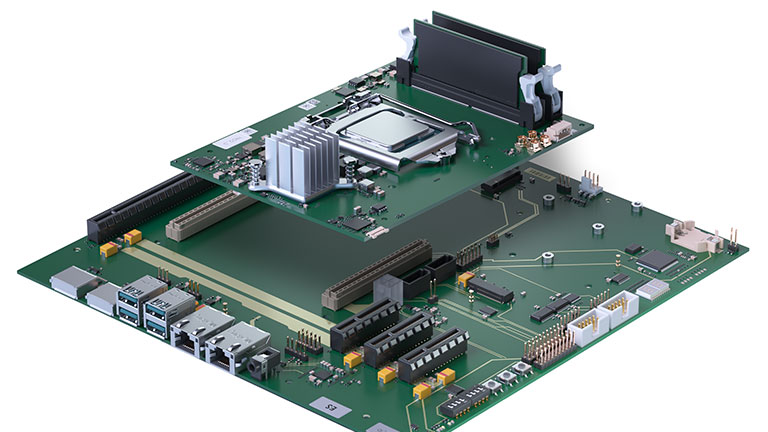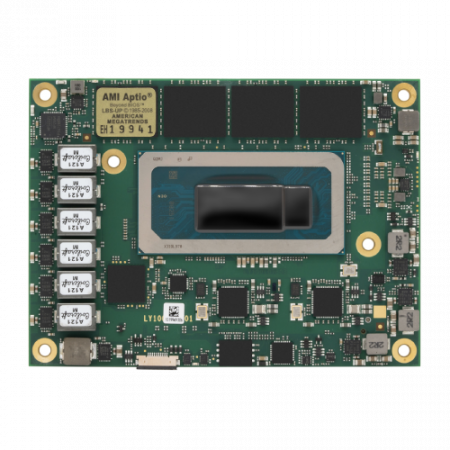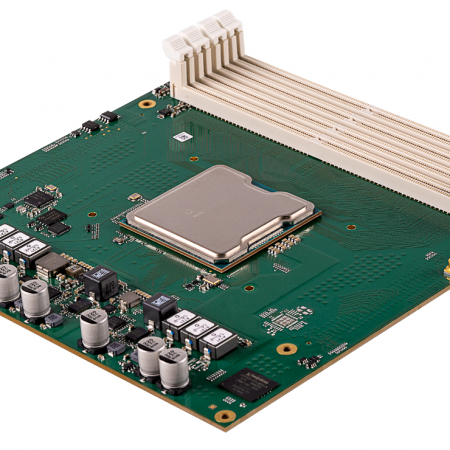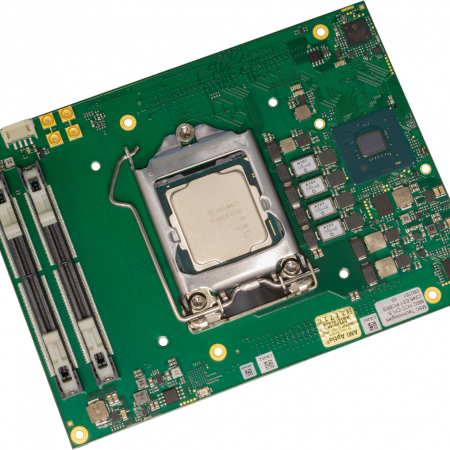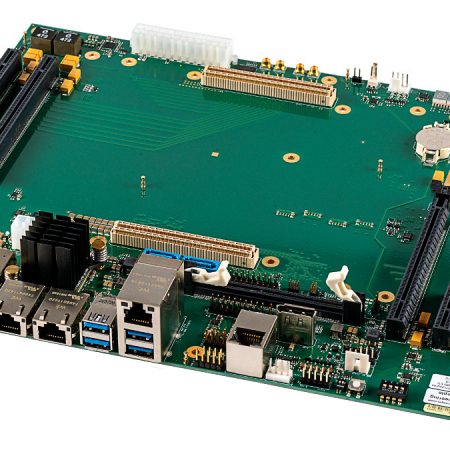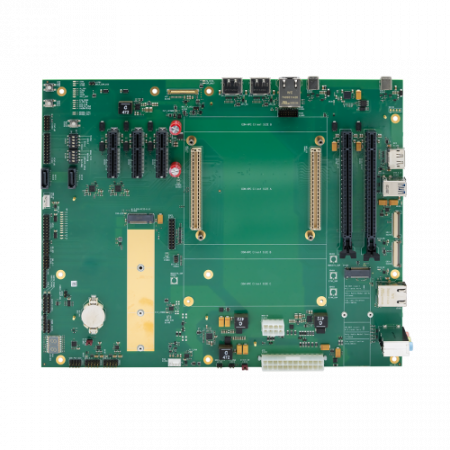What is COM-HPC?
As acronyms go, what you see is what you get with the COM-HPC form factor standard. A far more manageable way of saying ‘Computer on Module for High Performance Computing’, the standard itself is just as straightforward – put simply, it’s fast. Modules manufactured to the COM-HPC standard have a faster network connection, a greater number of high-speed interfaces and can significantly enhance performance.
But let’s start at the beginning. Like COM Express®, COM-HPC is a standard set by the PCI Industrial Computer Manufacturers Group (PICMG), but unlike COM Express, it’s a relatively recent development, with the specification only passing PICMG review in December 2020 and released the following February. This can be largely attributed the huge number of new applications where Artificial Intelligence is integrated into embedded systems which, of course, are performance hungry by their very nature.
Indeed, speed is of the essence when you consider the needs of autonomous vehicles, for example, or machine vision in an industrial automation environment. And only embedded processing will do in high volume data scenarios that rely on low latency – when even a fraction of a second counts. This is why COM-HPC is also an excellent fit for IoT technologies, 3D medical imaging and applications in the military and aerospace industries. Avnet Embedded manufactures two COM-HPC compliant modules and one carrier board, the MSC HC-MB-EV, which takes advantage of COM-HPC’s standard client interface.
Edge computing applications also benefit from the scaling up provided by COM-HPC and the Intel® Core™ 9th Generation enabled client interface, and the Avnet MSC HCC-CFLS is the ideal COM-HPC module for this purpose. COM-HPC also offers a server-focused interface for dedicated server applications using COM-HPC as a basis. While Avnet Embedded doesn’t yet offer a dedicated server-interface product, the MSC HCC-CFLS and MSC HC-MB-EV can still be combined to provide impressive compact server capabilities. Like COM Express®, it is ideal for field environments that require robust solutions, such as cell tower base stations, geophysical field equipment and defence systems. However, it’s important to stress that COM-HPC is not a replacement for COM Express®, but can be considered an extension to the standard, suitable for specific purposes that need a very high processing capability. Compared to COM Express®, COM-HPC has around double the board-to-board connectors (800 versus 400) and supports:
- 65 lanes of PCI Express connectivity up to Gen5 (32GT/s) speed
- 4 ports of USB4 (40Gbps) or USB 3.2 Gen 2×2 (20Gbps)
- 8 ports of 25GBase-KR with sideband signal
Both types of modules plug into a base board for simple application customisation and each has core CPU and memory functionality (COM-HPC also allows for FPGA-style designs). They are not, however, interoperable. Client modules should not be used with a carrier board designed for server module use and vice versa.
Our COM-HPC range is designed and manufactured in-house at our technology campuses in Germany and available worldwide. You can explore both the carrier and server modules in more detail on their dedicated product pages or contact us to find out more.

